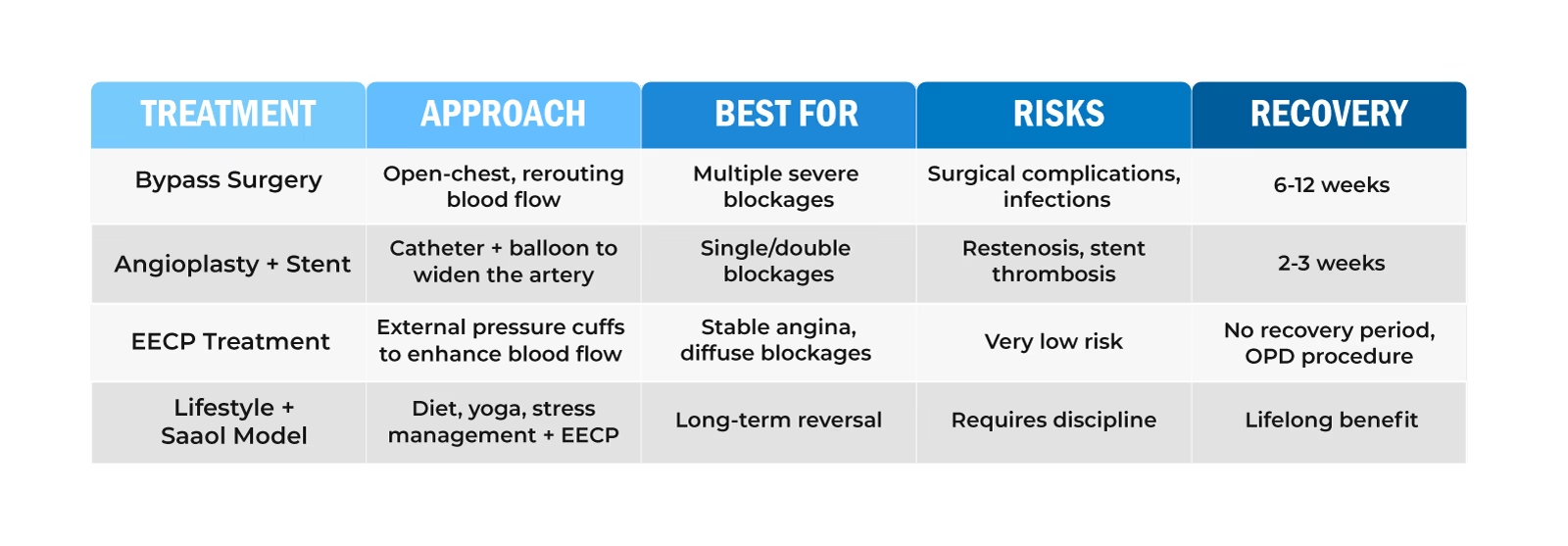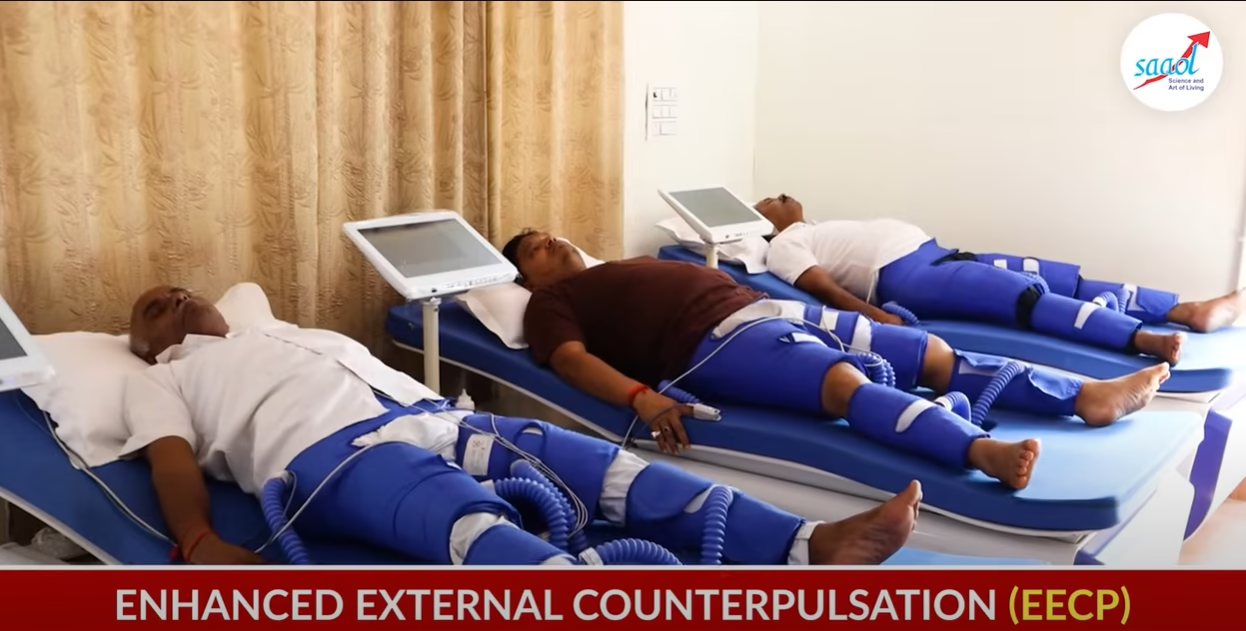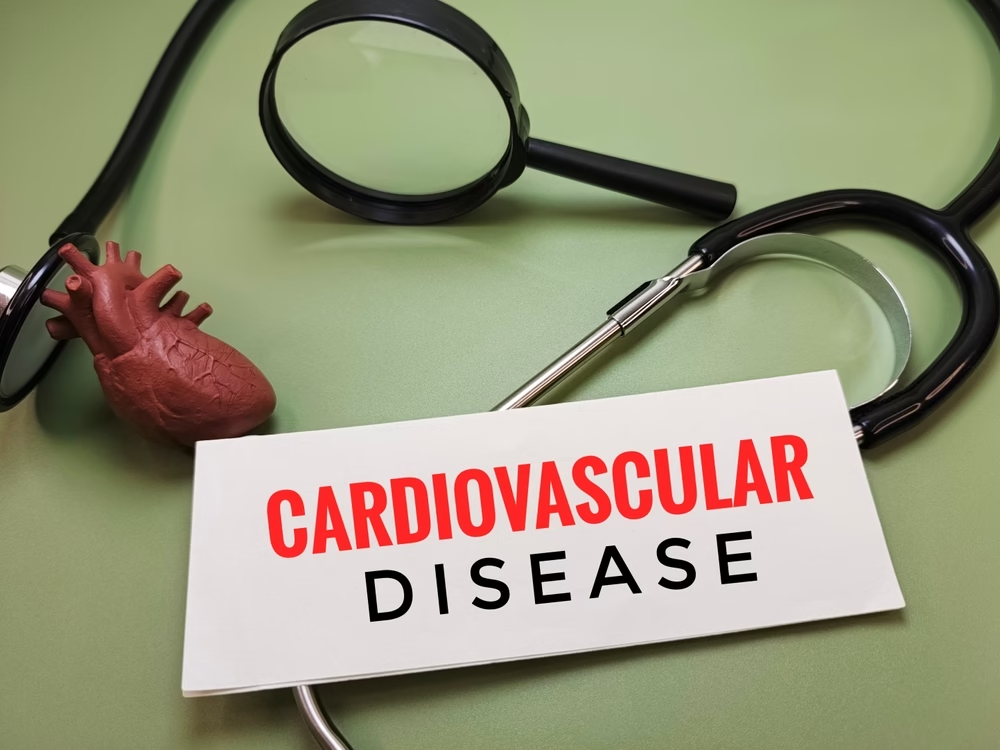Picture yourself at a traffic light in Delhi during rush hour. Mob of cars from every point, horns honking, engines racing, tempers flaring. Now imagine one traffic cop attempting to manage it all. That’s what your heart is really doing, every second, directing blood, keeping order, preventing chaos.
But what if one lane is blocked? In Delhi traffic, you find another way. In the human heart, it is not so simple. “Only surgery can open the jam,” they are frequently told. But not in 2025, that’s no longer the whole story. Today, there are safe, proven ways to avoid bypass surgery, reverse heart disease without surgery, and choose non-invasive heart treatment.
Patients at SAAOL Heartcare Delhi, under the expert guidance of Dr. Bimal Chhajer and his team, have recently found treatments, like EECP therapy in Delhi/NCR, which is an evidence-based way of improving blood flow without surgery. And that is really the question, isn’t it: Do you need an operation for heart blockage, or are there better heart blockage treatments we’re missing?
Table of Contents
ToggleWhat is a Heart Blockage?
A heart blockage happens when fatty deposits (plaques) narrow the coronary arteries. This restricts blood flow to the heart muscle and can cause chest pain or angina, breathlessness, or even a heart attack.
But many patients aren’t informed that 70% of heart attacks occur in blood vessels that are less than 50 percent blocked. The “big blockages” identified on angiograms aren’t always to blame. This is because a “surgery-first” strategy often fails to resolve the problem at the root cause of heart disease.
Heart Blockage Treatment in 2025
The treatment landscape for heart blockage has changed dramatically in 2025. Patients are no longer restricted to just bypass surgery or stenting. Here’s how the major options compare:
Bypass Surgery
- One of the most popular heart blockage treatments is bypass surgery. The doctor grafts a blood vessel from the leg or chest to make a “bypass” around restricted arteries, so blood can flow freely.
- Best for: Patients with numerous, severe blockages, left main artery disease or diabetics who also have multi-vessel disease.
- Risks: Because it is open-chest surgery, risks include surgical complications, infections, stroke, and long-term graft failure.
- Recovery: A significant operation that requires 6-12 weeks of recovery, sometimes longer, depending on age and overall health.
Angioplasty and Stenting
- Angioplasty, on the other hand, is a minimally invasive procedure in which a balloon is fed through a catheter to expand the obstructed artery. It is then held open with a stent (a small mesh tube).
- Best for: Patients with one or two blockages, or an acute heart attack.
- Risks: Restenosis (recurrent narrowing of the artery), stent thrombosis (clot in the stent), and potential future procedures.
- Recovery: It’s shorter than bypass, generally 2–3 weeks, but the disease may still progress.
EECP Treatment
- EECP (Enhanced External Counterpulsation) is a non-invasive, outpatient treatment in which cuffs are wrapped around the legs to push blood towards the heart. This creates natural bypasses (collateral circulation) and better oxygenation.
- Best for: Patients with stable angina, diffusely blocked arteries that are not good prospects for stenting, and even hearts that aren’t pumping, or heart failure patients.
- Risks: Very low compared to surgery. No incision, no anesthesia.
- Recovery: No downtime. Patients can walk away after each treatment and live their lives as usual, returning as necessary.
Lifestyle + The SAAOL Model
- The SAAOL model, which is conceptualized by Dr. Bimal Chhajer, is an all-in-one combining the zero-oil diet, yoga, meditation, stress management, and EECP therapy, formulated on a routine as a complete package. Unlike other therapies, it doesn’t just repair blockages; it actually reverses them.
- Best for: Patients seeking a long-lasting reversal, interim prevention of recurrence.
- Risks: None, medically — just the necessity of being disciplined and motivated enough to stick with lifestyle changes.
- Recovery: No surgical recovery needed. A lifetime benefit if strictly followed
Blockages are only temporarily fixed with surgery and stenting. In comparison, EECP therapy, the SAAOL model deals with long-term healing of removing the root cause.

EECP treatment, available at SAAOL Heartcare Delhi, is the safest option for stable patients who want to avoid bypass surgery and reverse heart disease without surgery.
Why Non-Surgical Heart Blockage Treatment Matters
Non-invasive interventions, such as EECP treatment in Delhi/NCR, have been approved by the FDA, backed by research studies worldwide, and reinforced by strong clinical experience in India. They not only benefit the blood supply but also promote naturally related bypasses (collaterals) within the heart.
A study published in Elsevier demonstrated that EECP decreases episodes of angina by 75% within two weeks.
Symptoms of Heart Disease Patients Ignore
The question that patients need to ask before committing to treatment: “Are my symptoms suggestive of severe disease, or can they be managed with non-invasive approaches?”
Common signs of heart problems:
- Chest pain (especially on exertion)
- Shortness of breath
- Fatigue
- Edema in the legs (caused by congestive heart failure)
- Irregular heartbeat
Specific congestive heart failure symptoms:
- Breathlessness at night
- Rapid weight gain caused by retention of fluids
- Difficulty lying flat
- Swelling in feet/ankles
Disregarding these can lead patients toward bypass surgery, which could have been avoided if they hadn’t ignored the symptoms.
Congestive Heart Failure Treatment in 2025
Heart failure is not a heart blockage, but the two are frequently intertwined. Congestive heart failure treatment is necessary when the heart begins to weaken because of reduced blood supply.
| Stage | Signs | Treatment Options |
| A | Risk factors, no symptoms | Lifestyle, prevention; EECP is not usually indicated |
| B | Mild symptoms, some weakness | Medicines, diet, supervised exercise, and selective EECP |
| C | Noticeable swelling, fatigue | Advanced drugs, rehab, EECP adjunctive |
| D | Severe symptoms, hospitalizations | Limited surgery, palliative focus |
The new recommendations emphasize prevention at an early age to avoid surgery and encourage participation in healthcare decisions.
Why Choosing a Heart Blockage Treatment Is Harder in 2025
The options for patients today are no longer simply “surgery or stents.” Medicine has advanced. But so has misinformation. Google searches yield conflicting advice, hospitals promote their own specialties, and patients typically feel pushed to take the quickest (and often costliest) cure.
Not every blockage has to be always surgically fixed. In fact, most patients advised bypass or angioplasty could be safely managed with non-surgical methods if carefully selected.
So before you decide, you must know:
- Which treatments truly save lives?
- Which are quality-of-life-enhancing, and not just survival-improving?
- What’s safest for you: based on age, diabetes, existing heart failure, and lifestyle?
Understanding the Types of Heart Blockages
Doctors describe heart blockages differently because the treatment choice depends on where the blockage is, how severe it is, and how your body reacts.
| Type of Blockage | What It Means | Possible Options |
| Partial blockage (<70%) | Narrowing, but blood still flows | Medicines, lifestyle changes, EECP |
| Severe blockage (>70%) | Major restriction in blood flow | EECP, bypass, angioplasty, depending on symptoms |
| Left Main Artery blockage | The “main highway” is blocked | Often bypass surgery, but EECP may help in high-risk patients |
| Multiple blockages | More than two or three arteries are affected | Surgery or EECP, based on stability |
| Chronic total occlusion | 100% blocked for a long time | Sometimes surgery, sometimes EECP + lifestyle |
EECP vs Bypass Surgery: What Patients Must Know
Bypass surgery remains the most common treatment in India. But consider it alongside EECP (Enhanced External Counter Pulsation) — a treatment that SAAOL has specialized in for decades.
| Aspect | Bypass Surgery | EECP Treatment |
| Invasiveness | Open chest surgery | Completely non-invasive |
| Hospital Stay | 7–10 days | Outpatient, no admission |
| Recovery Time | 6–12 weeks | Back to routine in days |
| Risks | Stroke, infection, complications | Almost none |
| Cost | ₹2.5–5 lakh | ~ ₹1.5 lakh |
| Quality of Life | Good relief, but new blockages can form | Improves circulation, lowers angina, boosts stamina |
Key Insight for 2025: Surgery cuts heart attack risk in certain patients (such as those with blockages of the left main artery or severe diabetic multi-vessel disease). However, for the large majority, EECP + medical management produces similar relief without the knife.
The Overlooked Factor: Heart Failure Patients

How EECP Helps in Congestive Heart Failure:
- Alleviates strain by enhancing the circulation of blood.
- Promotes “collateral circulation” — the growth of new blood vessels that bypass a blockage.
- Diminishes congestive heart failure symptoms such as shortness of breath and fatigue.
Signs You’re Being Urged Into Surgery Too Soon
Many patients who say yes without looking into other options regret it. Here are red flags:
- You were told “100% blockage,” but no one explained whether that meant chronic or stable.
- You were not presented with a meticulous view of your own angiography.
- Medical management or EECP was never mentioned as an option.
- You were forced to decide within hours.
Remember: the vast majority of stable patients have time to get a second opinion.
Lifestyle Modifications: The Missing Medicine
Dr. Bimal Chhajer has long argued: “You can’t cut away the disease if you don’t cut away its cause.” Heart Blockages are cleared away with surgery, but the disease remains. diet, exercise, and stress management that is the foundation.
At SAAOL Heartcare, patients are advised a zero oil diet, yoga-based exercise, and meditation along with regular follow-ups as part of their heart blockage treatment. This isn’t “alternative” medicine — it’s the base that will keep recurrence at bay.
Questions Patients Ask Before Deciding on Heart Blockage Treatment
- Can I avoid bypass surgery?
Yes. In stable patients, more than 80% such patients can be treated without surgery by means of EECP and lifestyle reversal.
- Is it safe for me to have EECP treatment if I’m diabetic?
Yes. It actually works better for diabetics, as their disease is more diffuse and stenting does not work well.
- Will non-surgical heart treatment reverse my blockages?
Clinical study showed regression of plaques up to 20–30% in 1 year with strict reversal programs, such as that followed based on the SAAOL Heartcare Model.
- How do I know if surgery is unavoidable?
Certain life-threatening situations (sudden heart attack, left main artery with significant disease, numerous prior unsuccessful angioplasties) necessitate intervention. But they represent fewer than 15 percent of patients.
What Patients Overlook
- Surgery does not prevent new blockages.
- Heart disease is systemic, not localized.
- Quality of life is more important than test results.
- Chronic heart failure is better treated with lifestyle modifications and EECP than with repetitive stenting.
Final Word
Heart blockage treatment in 2025 isn’t about “which hospital has the newest robot.” It’s about which approach gives you life without fear. At SAAOL Heartcare Delhi, Dr. Bimal Chhajer tells patients that the actual treatment is not cutting open arteries but curing disease from within.
Bypass surgery and angioplasty have their uses. For most patients, however, the safer non-invasive course is heart treatment without surgery: EECP (i.e., no stent), lifestyle changes, and keep surgery as a last resort.
FAQs on Heart Blockage Treatment in 2025
Q: What’s the best alternative to bypass surgery in 2025?
A: EECP and lifestyle reversal are the top two safe, proven ones.
Q: How long does one EECP treatment session last?
A: 40 hours across 5–7 weeks, each session lasting one hour.
Q: Does all heart failure require surgery?
A: No. 90% of stages of chronic heart failure respond to medications, EECP, and diet.
Q: Can a Heart blockage be reversed naturally?
A: Yes. In clinical trials, a plant-based zero-oil diet and stress management have produced marked regression under medical supervision.


